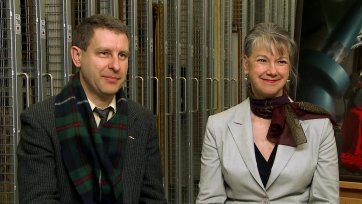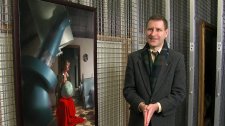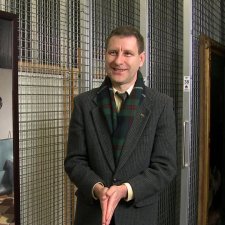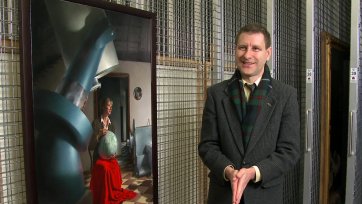Today we will LOOK at the portrait of Professor Penny Sackett by Andrew Mezei; THINK about portrait conventions; WATCH a video interview with Professor Penny Sackett and Andrew Mezei; DO a couple of activities and finish with a quiz.
Portraits are intended to be read. They’re like a biography in that they tell us about someone, although an understanding of the conventions of portraiture is sometimes helpful to interpret the message. Rather than just depicting Professor Penny Sackett’s features, artist Andrew Mezei uses certain visual devices and art historical traditions to provide context and to elucidate aspects of her character and history. The pose is relaxed yet poised; the expression is patient and engaged; the setting looks like an astronomy tower; the props include a globe and a telescope; the costume is business-like. Today we will consider pose, expression, setting, props (or symbols), and costume to start to understand the story the artist is conveying.

















